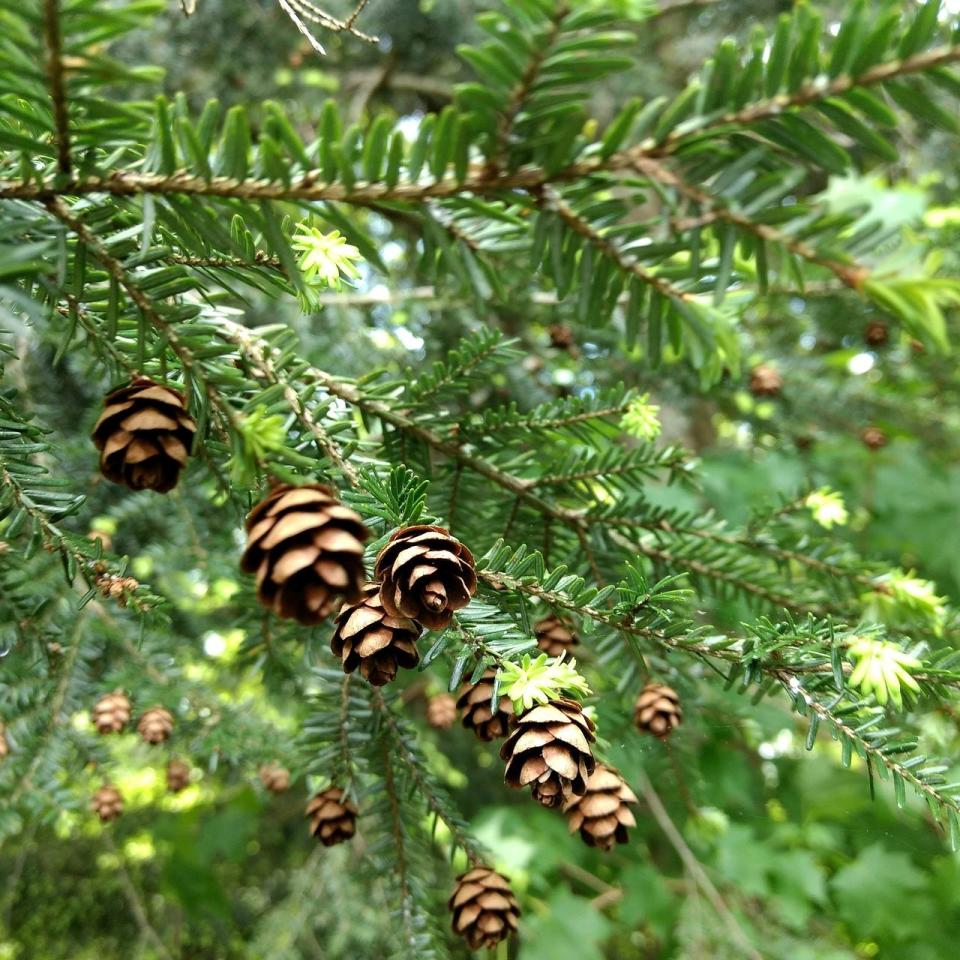Over the Garden Gate: Participate in environmental field studies of PA trees
This time of year, looking out over a forest vista or to your backyard woods, the trees are all a rich shade of green. Have you wondered about the different types of trees among them? Or the strategies these trees use to grow and coexist throughout the seasons and over their long lifetimes?
On Saturday, June 17, The Penn State Master Gardeners of Beaver County are hosting another field study to explore the central role of trees in our regional ecosystem.
About 57% of Pennsylvania (more than 16.6 million acres) is forested. These forested areas are managed in very different ways. Approximately 70 percent (or 12 million acres) are privately held by about 750,000 landowners, ranging from large companies that manage the timber resources with long-term business goals to smaller owners that use their woodlands for enjoyment or passively own them. The remaining forests (about 15 million acres) are publicly owned by either the federal, state, or local governments. For example, Beaver County boasts five parks, home to large, forested areas open to all to explore.
As Pennsylvanians, we should be able to identify the Eastern Hemlock (Tsuga canadensis), a common sight in Pennsylvania forests and named the state’s official tree in 1931. A slow-growing, long-lived tree, the eastern hemlock can take 250-300 years to reach maturity and may live for 800 years or more.

This important species is now threatened by the hemlock wooly adelgid (Adelges tsugae), an insect similar to aphids and appearing like small cotton dots among the needles. It feeds on the tree’s sap resulting in needle drop, branch dieback, and eventually the tree’s death. Identifying an infestation early is key to arresting the damage.

The topic of trees is vast and nuanced. Some of us may be interested in choosing the best native tree to introduce into our own property. Others may have an interest in better understanding big questions like the role forests play in bettering water quality and carbon sequestration. Businesses in the large wood products supply chain may be interested in efforts to control invasive pests such as the spongy moth (formerly known as European Gypsy Moth) (Lymantria dispar) or spotted lantern fly (Lycorma delicatula) or nonnative plants that can harm tree health such as the oriental bittersweet (Celastrus orbiculatus).
We all have our own unique connection to trees and forests, but likely share the experience of sitting in the shade under a tree’s canopy on a warm summer day.
If you would like to get more acquainted with the trees of PA, the upcoming field study is a great opportunity. You will learn to identify several common trees of Pennsylvania by several approaches and will walk away with practical knowledge to use on your property or during your next hike in the park. Join us from 9 a.m. to 12:30 p.m. June 17 at Wilson Farm in Brighton Township.
Find more information and register on here, or learn more about the Environmental Field Studies series on our website.
2023 Dates for Remaining Environmental Field Studies
Intro to Tree Identification, June 17
Pollinators, July 15
Growing a Pollinator Meadow, Aug. 5
Controlling Invasive Species, Part 2, Aug.12
To register for one or more of these sessions, please go to the group's website or call the Beaver County Extension office at 724-774-3003. Note that each session involves walking on uneven and often hilly terrain and will be held rain or shine.
This article originally appeared on USA TODAY NETWORK: Over the Garden Gate: Participate in environmental field studies of PA trees

